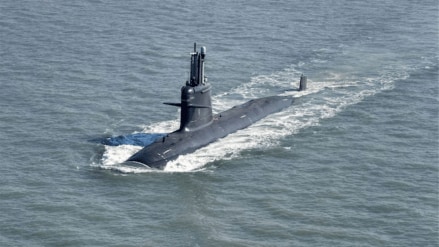India is on the brink of advancing its naval capabilities with the anticipated government approval for the construction of an indigenous nuclear-powered submarine, known as the Submersible Ship Nuclear (SSN). This project, expected to be approved later this year, underscores India’s commitment to bolstering its maritime defence, particularly in response to the expanding naval presence of China in the Indian Ocean region.
The SSN project is poised to significantly enhance India’s attack capabilities. Unlike conventional submarines, nuclear-powered submarines like the SSN have the advantage of staying submerged for extended periods, making them a formidable asset in deterrence strategies.
A key aspect of the upcoming SSN project is its emphasis on indigenous production, with 90 percent of the submarine’s components expected to be locally sourced. This aligns with India’s broader “Atmanirbhar Bharat” (self-reliant India) initiative, although some critical components may still be procured from international suppliers for viability.
The urgency of this project is underscored by China’s rapid advancements in naval power. The Chinese People’s Liberation Army Navy (PLA(N)) has been aggressively expanding its fleet, including the deployment of nuclear-powered submarines and aircraft carriers in the Indian Ocean. Since 2008, China’s anti-piracy operations have provided a cover for deploying these assets, which also gather vital hydrological data in the region. This growing presence poses a strategic challenge for India, making the induction of SSNs crucial for maintaining a credible deterrent.
Comparatively, China’s naval capabilities currently outpace those of India. The PLA(N) boasts a mix of both SSNs and nuclear-powered ballistic missile submarines (SSBNs), which give China a robust second-strike capability. Their speed in developing and deploying these advanced submarines has been described as “unbelievably fast” by Indian defence sources, emphasizing the need for India to not only catch up but also to strategically position its forces in the region.
Pakistan, on the other hand, remains behind both India and China in submarine technology. Pakistan’s navy primarily relies on conventional submarines, with limited scope in nuclear-powered technology. While Pakistan’s submarine fleet is not negligible, it does not match the technological sophistication or the strategic reach of China’s or India’s developing capabilities.
Significance of SSN Project
India’s SSN project, once approved, will bridge the gap between itself and China, ensuring that India remains a formidable maritime power in the region. The SSN’s ability to remain undetected underwater for prolonged periods and its potential multi-mission utility, including anti-submarine warfare and intelligence gathering, will significantly enhance India’s naval strength. In a region where naval dominance is increasingly critical, the SSN project represents a pivotal step in securing India’s maritime interests.
